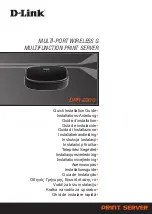
NComputing L-Series User Manual rev.05.07.12
Page
51
of
95
Q:
Why does a warning message appear when I install the vSpace Server software?
A:
Windows provides a firewall that displays a security warning message when a new network
port is used (see below). If you click the “Keep Blocking” button, you will not be able to find
NComputing servers. If you select the “Unlock” button, the port will be open unless you block it
manually. If you select the “Ask Me Later” button, the port will be open temporarily and the
security message will continue to appear whenever the port is accessed.
Q:
Can the product support 100Mbps or 1Gbps?
A:
The L300 will accept a 1Gbps connection, but the device itself does not benefit from
bandwidth which exceeds its average usage (typically under 10 Mbps)
Q:
What is transcoding?
A:
Transcoding is the process of converting media formats from one type to another. This is a
common technique used when wanting to optimize video for a given player or device. For
instance, you may transcode some video to play on a mobile phone. vSpace Server has an
efficient transcoding engine that converts video into a stream that can be locally decoded and
displayed on the L300 device in real time, completely transparent to the end user.
Q:
If a customer wants to publish video content optimized for the L300, what format is best?
A:
Original content up to standard DVD resolution (D1 - 720x480) will have the best playback
experience. Content may be encoded in many codecs, but if being distributed over the web,
high compression H.264 or MPEG4 delivers small file sizes, but if size is not an issue, lower
compression formats such as MPEG2 require less processing on the server. Please create a
test clip in one of the supported formats mentioned in the Multimedia section and test it on your
intended video player.
Q:
The accelerated multimedia feature of the L300 sounds like simple multimedia redirection.
How is this different?
A:
Multimedia redirection found in terminal server products from Microsoft or Citrix simply send
the entire media file over the network to be played by the client. This means that the client must
have a full media player software stack and the necessary codecs to decode those files. This
means that to achieve the same quality of video as the L300, a thin client must be 2-3X more
expensive and require painful management of the local software stack to constantly ensure that
codecs are loaded. Typically, this means the device needs to be similar to a full PC.
Q:
Am I required to connect both the USB and Ethernet cables from each of the smaller access
devices to the larger device?
A:
If you require USB 2.0 functionality you will need to connect a USB A/B cable between the
small devices and the large device as shown in the L300 Device Setup section of this guide.
The small devices can support USB 1.1 connections (a standard that most USB keyboards and
mice are compatible with) without this additional connection.
















































